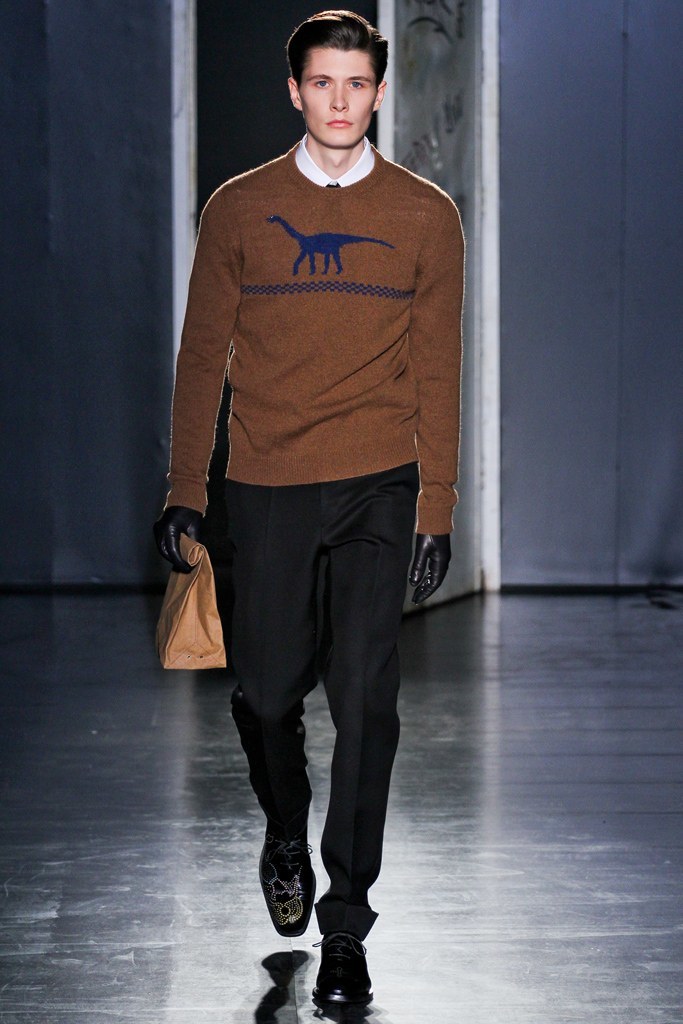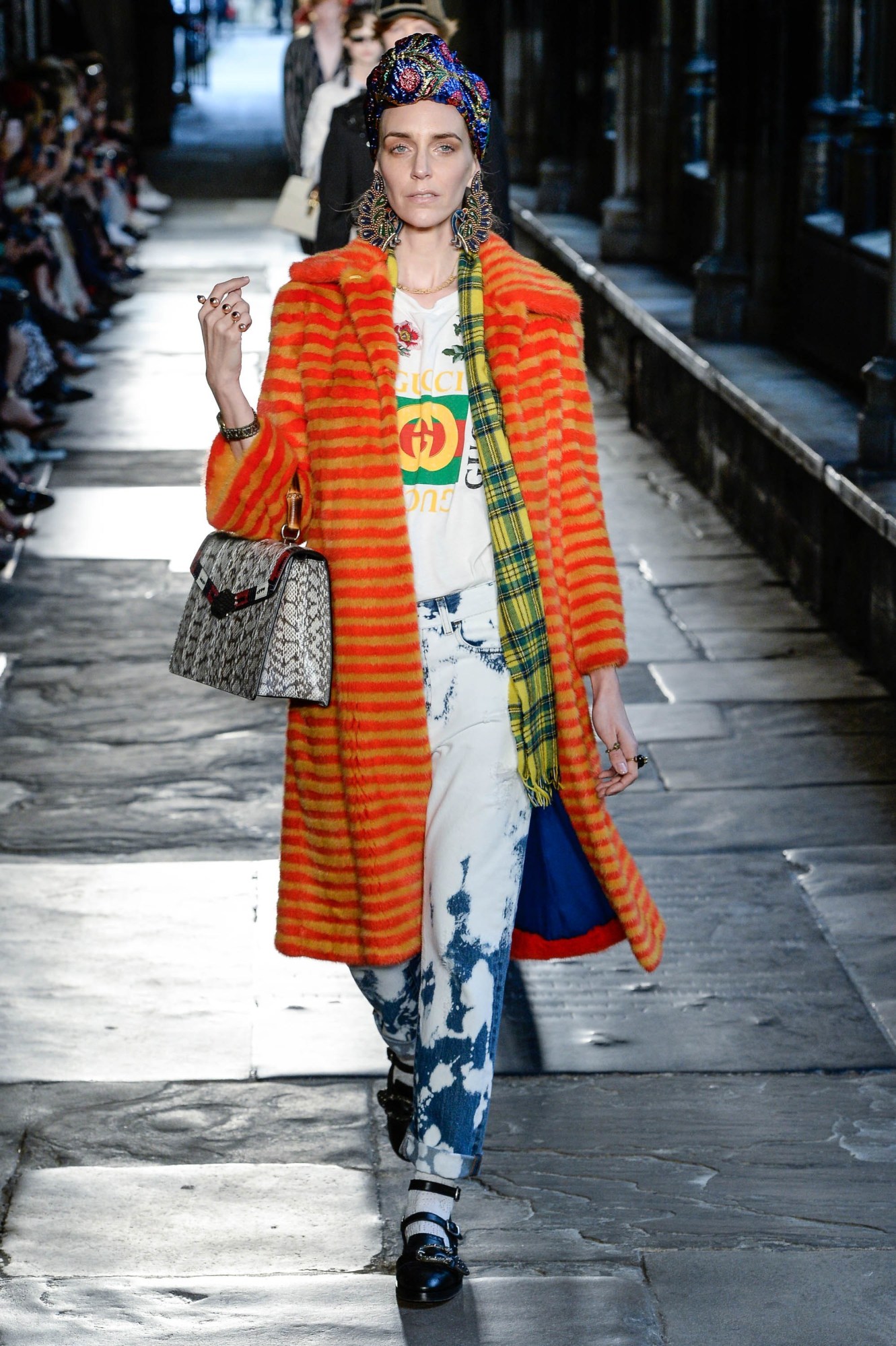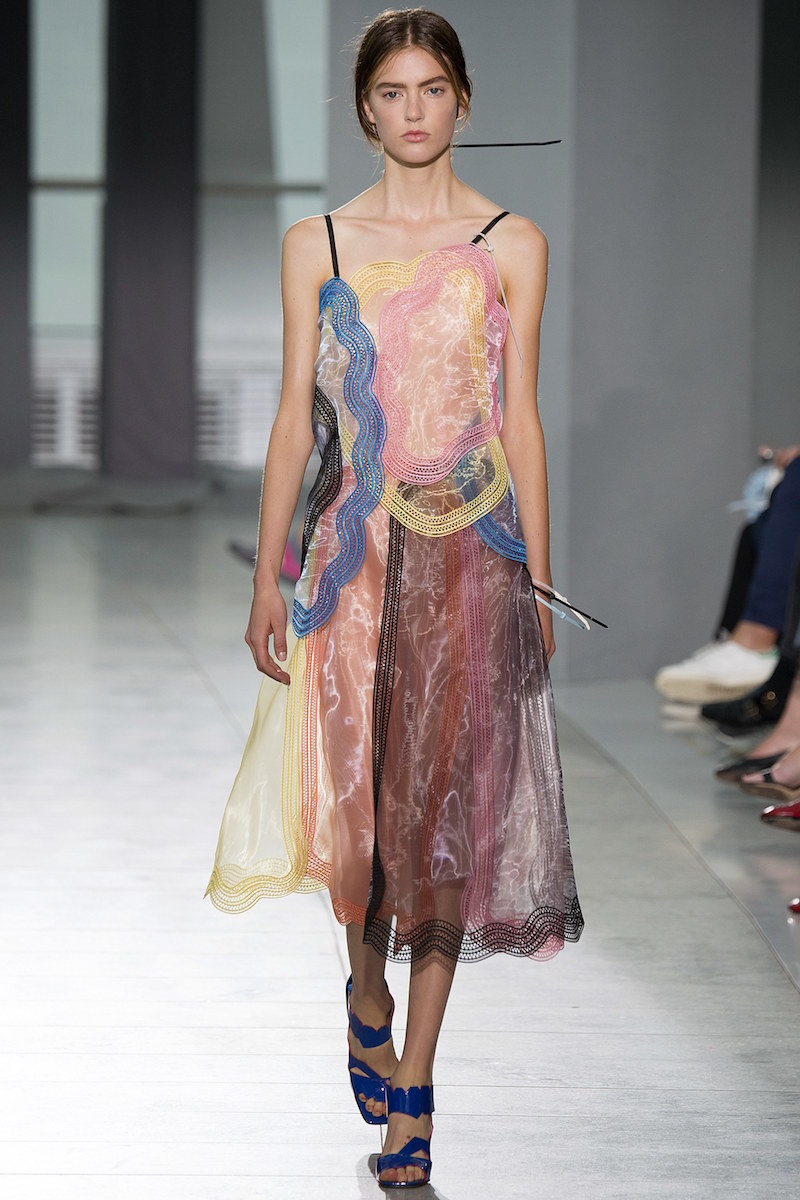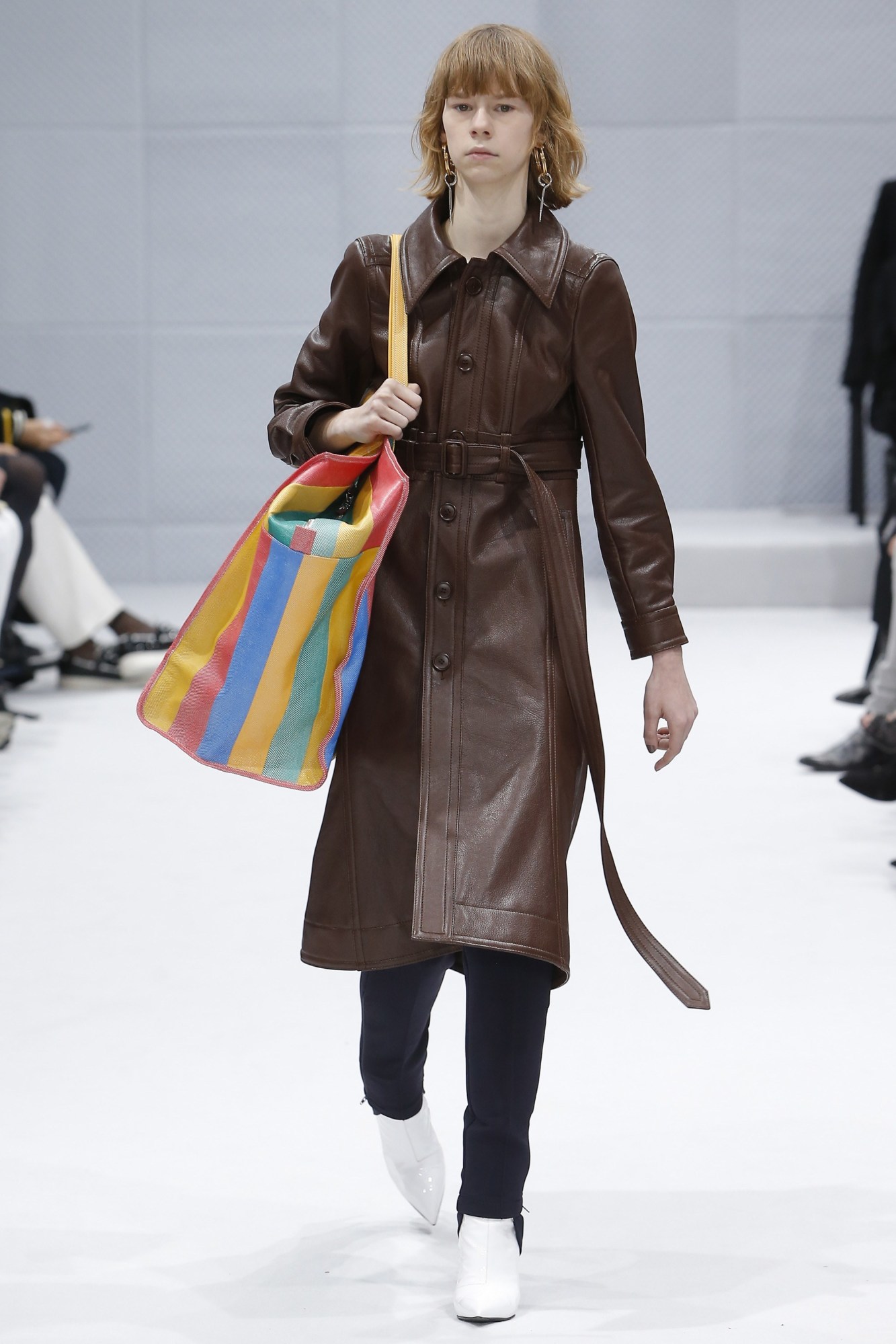Search for #balenciaga on Instagram, and next to stockpiles of leather bags, catwalk shots, and street style snaps, you can see a fashion meme in action; people are posting photos of stereotypical striped Taiwanese plastic market bags and hashtagging the brand. Of course, the Balenciaga Bazar, the it-bag from the brand’s reinvention under Demna Gvasalia, unquestionably references these cheap market staples; the bag lends itself to the joke and is certainly in on it. A sampeng – the aforementioned Taiwanese bag’s nickname – and the Balenciaga bag are close to identical in the flattened, online world of images we live in. Same shape, same stripes, same colors. In a market where counterfeits and fashion houses are referencing each other alike, it opens a game of spot the difference that sets the distinctions between luxury and cheapness, helps us unveil the way luxury is changing right now.
Luxury is protean; it’s an industry usually full of innovation and experimentation. It introduces new concepts to the market, which then tumble down to the mainstream, and it continually does this. But today’s version of luxury has a very different surrounding to adjust to. Our society thrives on a strange mix of high-low. It’s partly the result of our collective move to the egalitarian, equal-opportunity pastures of the internet, and of a shopping culture where all demographics exploit the convenience and consistency of mega-corporations. The brightly-lit language of branding and ads has become a ubiquity for every class of consumer, and fashion designers have loved to dramatize the high-concept intensity of the days of our lives.

The reception to Demna Gvasalia’s designs, including the Balenciaga Bazar bag, tells us lots about current expectations of luxury. He’s been misunderstood as making anti-system anti-fashion statements with his quotidian style, but he’s repeatedly stated that it’s not his objective at all, at either Vetements or Balenciaga. Staging a Vetements collection at Galeries Lafayette during Paris couture week this summer felt transgressive, but you had to be au fait with the industry to find it so. If couture itself is a little staid, and gets criticism because it doesn’t bear enough relevance to the public’s lifestyle to be especially desirable, then the fashion system at large is also disjointed from reality; the past few seasons’ experiments in restructuring the schedule attest to it. Inaccessibility is vital to the effect of luxury, but the industry now finds itself in a position where it needs to respond to a shortened attention span, a new expectation to never need to wait too long for anything. In his book, On Luxury, Jean-Noël Kapferer described luxury as “an industry like no other: it is the only one for which growth creates a problem.” Especially a problem now the net has opened up fashion to anyone who’s connected. It’s no longer a closed world; the barriers between the masses and insiders are long gone.
Franco Moschino always enjoyed dramatizing this dichotomy, this high-low contrast in his work; merchandising handbags in a street-market setting, burrowed between mounds of fruits in wooden crates, to reposition their social value. Or designing a dress made from Moschino-logo carrier bags for one of Jo Ann Tan’s infamous window displays, under the heading, “Label Queen”.

Franco (who opened the house in 1983 and designed until his untimely death in 1994) constantly argued that the fashion system is void of meaning, void of content, that “fashion is gone. All that is left are the people and the clothes”. For this reason, his designs focused heavily on symbols and iconography, where the garment is sometimes secondary to the message it carries. It’s arguable the world now has caught up with Franco’s point of view; at the very least, the “label queens” have lost their power. Cheapened by mass production and ubiquity, in both authentic and counterfeit form, easily reproducible visuals like logos are no longer the strongest currency of luxury.
Instead, logos and monograms have a different significance now. A logo T-shirt might have once been an earnest proposition; these days, it’s a product selling a more coded visual, sometimes irony. Alessandro Michele can produce a T-shirt for Gucci’s Cruise 16 collection modeled on those found on the counterfeit market, and people desire it for its witticism, for showing a grasp of Michele’s thoughts on vulgarity, for its notoriety because internet. In the same way, he can also collaborate on products with artist Trouble Andrew aka GucciGhost, whose work repurposes the Gucci logo through an iconoclastic, low-budget lens. It seems today that the trendiest form of elitism is focused on artistic and cultural integrity – the romanticizing of skate culture by everyone up to American Vogue testifies to this. Luxury, now, seeps into all aspects of lifestyle; it forms a deepened integration into the manifesto of a brand, into its clique, offering a sense of identity that’s gratifying privately as well as in the pageantry of wealth.

Raf Simon’s fall/winter 2012 menswear collection for Jil Sander was a landmark statement on this kind of coded luxury, on these clever pretexts of fashion victimhood by designers. Invitations were memorably sent out on business cards in homage to Bret Easton Ellis’s American Psycho, prefacing the collection’s discussion of materialism, status, cathexis, and identity insecurity. Who can forget the way Patrick Bateman’s sense of self-worth hinged on the subtleties of the design of his business card in relation to the designs of his peers?
Jil Sander lunch bags in hand, the catwalk show presented a group of leather-clad yuppies on their commute. The tidiness and homogeneity of their slim ties, standard collars and notched lapels exhibited an alertness to social rules of dressing. The business suit was the crux of the collection, iconographic in its signals of conformity as well as spending power. And rendering the silhouettes in a material as expensive and emotionally invested as black leather reiterated the impression of dominance. The lunch bag was an especially intriguing statement. In the storyline of the collection’s leading male, it told us that this particular character needs things to be vetted by a designer to justify its being. The coated paper Jil Sander bag, that retailed for over $300, was, of course, hugely hyped and popular. Ironically, the kind of ease of the understated design partly – partly! – concealed the highly strung intensity that inspired its purchase.

Many times, in past episodes of high fashion’s imitation of cheap commodities, the products have been replicas of their prototypes: said Jil Sander paper bags, or cotton DHL T-shirts from Vetements, or Christopher Kane’s $50 cable-tie chokers. There’s a tax for the ethical practices and work that goes into a $2500 Balenciaga Bazar bag, produced in lambskin, by hand, with every component of the bag manufactured and assembled in Italy. But, ultimately, the distance in price between it and its plastic prototype is largely charted in metaphysical space. A space of expectation, of aspiration, of potential, i.e. luxury. Franco Moschino’s affectionate description of pop culture’s “schizophrenia and distortion… three-dimensionality and sensorial confusion” has many parallels to luxury for us to dwell on. It’s a truism that luxury fashion is a market of emotional transactions.
Where does luxury go from here? This new form of luxury must inevitably expire and change too. From slogan hoodies to tartan shirts (à la Beyond Retro), it is making it especially trickier to disguise or justify our vice when the expensive is imitating something so absurdly accessible. Many critics see us continuing along our quest for cultural integrity in luxury, specifically with its suggestion of a deepened integration into elitism. It is a version that focuses more on experience than object. More on knowledge than object. One that feels more authentic, more fleeting, more permafrost than surface level. It sounds mildly pleasant. What’s the price?
Credits
Text Kinza Shenn
